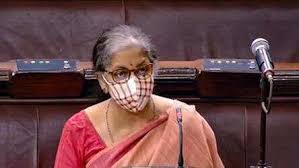World
India, US to keep talking about visa, double taxation issues

By Arun Kumar
Washington: India and the US have agreed to continue their engagement on the vexed issue of a totalization agreement for the purpose of avoiding double taxation of income with respect to social security taxes.
“There is steady progress on the issue,” Minister of State for Commerce & Industry, Nirmala Sitharaman told Indian media Thursday even as she called the US insistence on a “comparable social security cover in India” as “unfair.” She was speaking after a meeting of the US-India Trade Policy Forum (TPF), co-chaired by her and the US Trade Representative, Michael Froman.
Indian workers have contributed over $6 billion towards social security and the figure keeps growing by about $1.5 billion annually. But in the absence of a totalisation agreement they don’t get the money back once they return to India.
Sitharaman said she had told her interlocutors in Washington that social security cover in India need not be comparable for the purposes of a totalisation agreement as in the Indian system it was the family which provided security to the jobless and the elderly.
India and the US have also agreed to continue their engagement on another issue of concern to India – the limitations on mobility of skilled professionals and issues concerning H1B and L1 visas, including the spike in rejection rates of L-1 visas.
Sitharaman said the US response to Indian concerns on the visa issue was positive. It had also assured India that the hike in visa fee was not discriminatory.
Sitharaman underlined the openness of India to understand the recently concluded Trans Pacific Partnership (TPP) Agreement and its implications for bilateral and regional trade. At the request of India, USTR provided a detailed presentation on the TPP.
A Joint Statement on the Trade Policy Forum said the two sides reviewed substantive progress achieved in deepening bilateral trade and investment goals in 2015 and discussed plans to promote economic growth and job creation in both India and the US.
Sitharaman and Froman also discussed the status of US and Indian trade agreements with other countries and ways to ensure that bilateral trade and investment between the US and India can continue to grow.
TPF discussions focused on four broad work streams including Agriculture, Trade in Goods and Services, Investment in Manufacturing and Intellectual Property, according to an Indian Embassy release.
In the area of Agriculture, both sides noted forward movement in discussing plant and animal health issues and resolution of labelling and packaging requirements.
In addition, they agreed to work on enhanced market access for identified agricultural products, including Indian rice, mangoes, grapes, pomegranates, honey, marine products, etc.
Noting India’s concerns on the new Food Safety and Modernization Act implemented by the USFDA that mandates new compliance standards for food imports into the US both sides agreed to continue discussions on this.
In the area of Trade in Goods, India discussed issues affecting market access for pharmaceutical products and Indian Traditional Medicines (AYUSH).
India also raised concerns over the listing of Indian products by the US Department of Labour and its impact on Indian handicraft industry and exports from small and medium enterprises.
The US appreciated India’s liberalisation of FDI caps in the insurance, defence and railways sectors. Both acknowledged the importance of promoting a business friendly environment for attracting investment in manufacturing.
The US also welcomed India’s efforts to improve the ease of doing business through simplification of procedures, ordinance to establish commercial courts, single window clearance and other reforms.
Both sides noted the enhanced engagement in the area of intellectual property and discussions on patents, copyright, trade secrets, traditional knowledge, and standard essential patents.
The US welcomed the establishment of an IPR think tank to draft a National IPR Policy.
In the area of copyrights, both sides recognized the shared interests of their entertainment industries and agreed to schedule a workshop on promoting copyrights awareness and capacity building in the first quarter of 2016.
Both sides also noted their commitment to protecting trade secrets.
The tenth round of the TPF will be held in India in 2016.
World
Lockdowns in China Force Urban Communities to Defy Censorship and Vent Frustration Online

Shanghai’s rich middle class is leading a wave of online dissent over the strict and prolonged lockdowns imposed in various parts of the country. Chinese internet censorship is struggling as patience is wearing thin in many urban centers, coming up with creative forms of online protests.
Social Media Posts Revealing Lockdown Tension in Shanghai
Drawn-out lockdowns are nothing new in China as authorities insist with the nation’s zero-Covid policy since the start of the pandemic. Currently over This time around, however, metropolitan areas like Shanghai are increasingly difficult to keep quiet, given that its more than 25 million residents have seen weeks of total isolation along with food shortages and many other service interruptions.
Dozens of towns and reportedly over 300 million Chinese citizens have been affected by lockdowns of different severity. As expected, urban netizens have been most outspoken over their difficulties by finding creative ways to get around state censorship and bans placed on topics, news comments and spontaneous campaigns.
Shanghai residents have been using mobile proxies and hijacking seemingly unrelated hashtags to talk about healthcare issues, delivery failures and the overall severity of their situation. The “positive energy” that the Chinese government wants to transmit during the recent prolonged series of lockdowns does not come naturally to those counting food supplies and online censors are working hard to filter words, trending topics and undesired social media sharing.
WeChat groups and message threads are under constant monitoring. Posts questioning the zero-Covid approach have been quickly deleted, including by leading Chinese health experts like Dr. Zhong Nanshan. Video footage is soon censored and protests and investigations are quickly made to disappear.
Where this has not worked, officials have exposed banners with warnings and outright threats like “watch your own mouth or face punishment”, while drones have been patrolling the city skies. Yet, if anything, this has led to further tensions and unspoken confrontation with Shanghai’s educated and affluent middle class.
Creative Online Solutions Harnessing Civic Energy
Announcements by Chinese social media that they would be publishing the IP addresses of users who “spread rumors” have not helped either. Tech industry research has shown that much of Asia’s tech-savvy population has a habit of using mobile proxies and other privacy tools, quickly finding workarounds to browse the internet freely and talk to the world about the hottest topics.
The sheer volume of forbidden posts is already a challenge for the very censorship system, experts explain. Unable to track all trending hashtags, state workers overlook topics that speak about the US, Ukraine or other popular news. Linking human rights elsewhere to their situation, Chinese online dissidents establish their informal channels and “hijack” the conversation to share personal or publicly relevant information about the Covid suppression in their town.
Sarcastic and satirical posts still dominate. Others hope to evade the censors by replacing words from famous poems or the national anthem. One thing is certain – social media, when harnessed with the right creativity, has proven its ability to mount pressure on the government in even some of the most strictly controlled tech environments like China.























